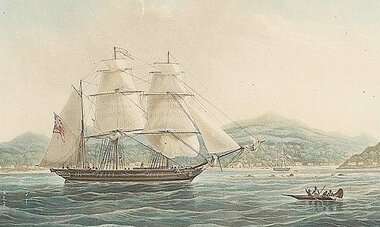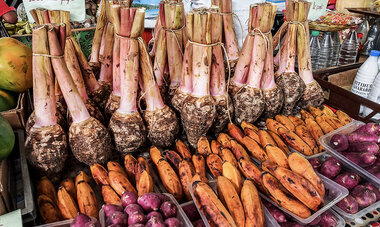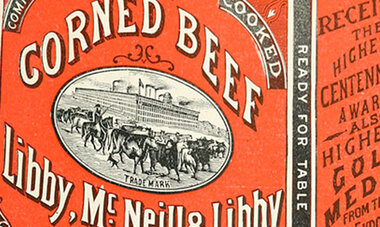
Best Restaurants in Bora Bora
Mai te Pora, the island created by the gods, has a very intimate and close connection with gastronomy. The story goes that incredible feasts with the finest and rarest products from the sea, crops, and farms were organized.
What is the tastier food of Bora Bora, the Pearl of the Pacific? International cooking techniques with the finest local products from the lagoon and the islands. As for trusted recommendations of restaurants, with our partner Tama'a magazine, we offer you this selection highlighting tasty and original local products. Follow the guide for a perfect dining experience.
Bora Bora’s best restaurants
Bloody Mary’s, Bora Bora's most renowned bar & restaurant, is located south of the main island, at the exit of Pofai Bay.
You can choose fresh products from a refrigerated display; meat, fish - shimmering ones - and all kinds of vegetables. They will be cooked for you and served. You will eat while having your feet in the sand, with a Polynesian musical background. Good cuisine and a good atmosphere typical of French Polynesia: what more could you ask for when dining in Bora bora?
Saint James.
This is Vaitape's (Bora Bora’a main city) bistronomic restaurant, near the city center, close to the marina, and right by the sea. Savoring the exquisite experience of refined cuisine with local products and French culinary know-how in a romantic and peaceful atmosphere. Beautiful wine cellar.
Villa Mahana.
This is the only restaurant on Bora Bora island planted high up on the mountainside in Pofai Bay. With only a few tables and limited place settings, the chef welcomes the guests and prepares dishes making your meal a unique and gourmet experience. He proposes gastronomic meals with local and imported products.
The five-star hotels' gourmet restaurants.
Based on Bora Bora Reef's motu, the resorts offer innovative and sophisticated cooking. Products of the Fenua are often highlighted with the best-imported food. Perfect for a romantic dining experience in one of Bora Bora's most exclusive restaurants.
We recommend, among other restaurants, the Lagoon Restaurant by Jean-Georges at St-Régis Resort and the Corail at the Intercontinental Thalasso Resort.
Bora Bora Yacht Club.
In Vaitape, is an ideal restaurant to drink a cocktail from the bar at sunset and to have dinner in a romantic setting: facing the lagoon, you can taste a cuisine inspired by France and Polynesia. Dining in this restaurant is a true experience : don’t miss the Bora Bora Yacht Club for the best sunset of your life !
Same with the other islands, you can’t go to Bora Bora without eating raw fish at the food trucks. There are some all around the island, including the iconic Matira snack. As for the food truck, I particularly recommend the Crêperie Bretonne. They had the great idea to cook waffles and galettes with local products.
By the way, how did the cooking in Bora Bora come about?
The culinary history of Bora Bora
When "Bora Bora i te fanau tahi the firstborn" - in other words, the oldest island of Eastern Polynesia - was called Vavau; three great tribes of warriors were often fighting to dominate the island and to become Ari'i rahi, the equivalent of king. After each conflict, peace was always celebrated with incredible feasts. After the sacrifices performed by the tahu’a (priests), pigs, fish from the lagoon and the sea, tubers, and vegetables from the cultivated lands of Anau districts, Nunue and Faanui were eaten together.

Protestant influence
The English Protestant missionaries, who arrived on the island in 1820, did not revolutionize the local gastronomy by bringing new products. They did it by introducing new practices. They imposed a life of deprivation based on constant biblical moderation. At that time, the inhabitants of Bora had periods of abundance and scarcity, depending on the climate, harvests, wars, and the provisions they could make.

The arrival of processed products
After the annexation of Bora Bora in 1898, French domination did not change any habits except for the imports of very few processed products. After the First World War, more commercial ships brought to the inhabitants preserves and exotic foodstuffs (English, French, and German mainly). The Polynesian diet stayed based on products from the fa'a'apu (various tubers, fafa, watercress, fruits, etc.), from the sea on the moana side (offshore fishing), from the lagoon (tairoto), from a'au (reef), and from parare (falling).

Bobcat Operation
The food revolution of the Raromatai (Bora Bora and the Leeward Islands' name) happened during the Second World War through a code name: Bobcat Operation. Indeed, in its fight against the Japanese Empire, Bora Bora was chosen by the American general military staff to become a rear base for its army in the Pacific. Supply, boat maintenance, house of resting soldiers... Within 3 years, Bora welcomed more than 5000 GIs.

Corned Beef success story
How long ago it was since Captain Cook arrived in Bora Bora (1769), and when King Puni of Faanui offered him a banquet worthy of a king.
American brought their eating habits, their stores, and their products. The inhabitants of Bora - especially young people - were fascinated with their lifestyle. The "monkey" was the nickname given to corned beef in French-speaking countries. This product was already widely eaten in the South Pacific. It became popular with a heavier, saltier, and fattier American version: the Ham and Egg. It was followed - in 1943 - by the bottles of coke, distributed in military bases all over the world.
The day after the Armistice agreement, the GIs left Bora Bora. Only remained an airport runway, their influence on customs and gastronomy, and the beginnings of international tourism. The airport of Tahiti only opened its commercial lines in October 1961.
Back to basics
You know the rest of the story; hotels settled in French Polynesia and on the island, with restaurants as international as their customers from all over the world, welcomed in these magnificent floating palaces.
But over the last fifteen years, the awareness that a more local and healthier diet was necessary, led Bora Bora chefs to gradually shift towards cooking products from the island, the lagoon, and the whole French Polynesia. It is now your turn to enjoy it!